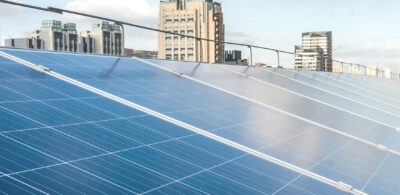Unprecedented AEMO intervention in the NEM: what might the future hold for battery and renewables projects?
06 July 2022
The Australian Energy Market Operator’s (AEMO) suspension of the National Electricity Market (NEM) wholesale market on 15 June 2022 was the first since its inception in 1998.
The suspension followed other unprecedented market interventions by AEMO. In preceding weeks, cumulative high price thresholds set under the National Energy Rules (NER) were hit, triggering administered price caps on wholesale electricity and gas across multiple states.
Although the suspension has now been lifted, current market pressures increase the likelihood that such drastic measures may be implemented more frequently. This may have wide-ranging implications for battery and renewables projects alike and should remain front of mind for contracting parties.
What are the driving factors for the caps and suspension?
Under the NER, if electricity spot prices remain high and hit a cumulative total of $1,359,100 in a seven day period (the equivalent of spot prices remaining at the market cap of $15,100/MWh for every five minute interval in which they are set for a total of 7.5 hours in a single day), an administered price cap of $300/MWh will be triggered. Gas spot prices work in a similar fashion and will be capped at $40/GJ after reaching the cumulative price threshold.
Both market mechanisms have been triggered in recent weeks as a result of the surging price of gas and electricity in Australia, described by Treasurer Jim Chalmers as the ‘perfect storm’ of:
- increased energy demands due to an early winter cold snap;
- increasing generator outages due to age-related maintenance requirements;
- low renewable energy generation;
- low availability of battery storage; and
- high demands on Australian gas exports forcing an increase on domestic prices resulting from sanctions imposed on Russia due to the war in Ukraine.
In addition to these compounding factors, AEMO also indicated there had been significant removal of capacity from the market that had forced AEMO to direct 5 GW of generation through direct intervention. Immediately prior to the imposition of the spot market suspension, the Australian Energy Regulator (AER) issued letters to market participants outlining a suspicion that some generators had moved to withhold supply to the NEM in response to administered price caps and in an attempt to force AEMO to issue a direction to supply; which ultimately results in greater compensation outcomes under the NER than the administered cap regime. This correspondence reiterated to market participants that purposeful withdrawal of available capacity, or false or misleading offers, bids and rebids may constitute a breach of the NER.
Overall, AEMO concluded the combination of events leading to the removal of capacity from the NEM had made it “impossible to continue operating the spot market while ensuring a secure and reliable supply of electricity for consumers in accordance with the NER”, triggering its decision to suspend the wholesale spot market from 15 to 24 June 2022.
Simply put, the purpose of the suspension was to ensure that electricity supply shortfalls could be avoided in the face of an unreliable spot market. A suspension theoretically achieves this goal through two mechanisms.
First, it allows AEMO to apply pre-determined suspension pricing for electricity supplied to the NEM. This standardised pricing is supplemented by a compensation regime that reimburses generators for their costs of supply during a suspension where pre-determined prices are too low to cover those costs. This is seen to encourage generators to continue to supply to the NEM because it ensures they can breakeven on all costs of doing so. In comparison, under the administered price cap regime they may be required to operate at a loss where the costs of supply overshoots revenue when prices are capped.
Second, a suspension will also give AEMO the power to issue directions to generators to supply to the market in order to ensure that supply can meet demand (though this power is also available outside of a suspension period). This second mechanism acts as a safeguard on the efficacy of the first.
Future outlook
Almost all of current pressures on the energy market are likely to be enduring, at least in the short term. It is likely that AEMO will see a need to implement caps or suspend the spot market again to ensure reliable supply to the Australian market.
Long term, repeated AEMO intervention in the spot market will be unsustainable for generators, costly for retailers and ultimately expensive for consumers. While the compensation regime under the NER provides a short term solution to reimburse generators for their costs of supply during the suspension, generators will face ongoing pressures due to commodity prices and it is likely that the burden of the regime will be passed through to retailers and consumers.
Considerations for renewables
More renewables in the grid is absolutely critical for the long term sustainability and resilience of the NEM, and a shortage of this capacity has been one of the factors driving the current energy crisis.
In periods of high energy demand and low coal and gas fired generation availability, greater renewables would allow the NEM to rely on a diverse pool of energy sources. Greater renewable energy generation capacity would also mitigate the risks of fluctuating demand and prices, characteristic of the global fossil fuels market, ensuring Australia would be better equipped to insulate itself from geopolitical shocks.
This, paired with the new Federal Labor government’s commitment to a 43% reduction in emissions by 2030 and a net-zero target by 2050, signposts strong support for renewable energy projects over the coming decades.
AEMO’s 2022 Integrated System Plan released on 30 June 2022 also signals the need for increased renewables, with AEMO CEO Daniel Westerman suggesting that:
‘to maintain a secure, reliable and affordable electricity supply for consumers through this transition to 2050, investment is required for a nine-fold increase in grid-scale wind and solar capacity, triple the firming capacity (dispatchable storage, hydro and gas-fired generation) and a near five-fold increase in distributed solar.’
The road to increasing renewable capacity will likely be accompanied by its fair share of challenges for which project owners, developers and contractors should remain prepared. During this most recent suspension period, labour capacity challenges faced by AEMO pushed it to suspend commissioning activities for a number of wind and solar projects. Potential repetition of this problem should remain front of mind for contracting parties on burgeoning renewables developments.
Whilst more renewable energy in the grid will be necessary for energy market stability now and into the future, in consideration of lead time and grid connectivity issues on renewable projects and a decrease in investment in large-scale renewable energy projects (as reported by the Clean Energy Council), reliable and varied base load will also be critical. We expect that this will bear a renewed focus on hydroelectric, hydrogen and battery projects.
Challenges for battery projects
The imposition of price caps and the spot market suspension also presents a unique challenge for battery owners supplying to the NEM.
The compensation regime set out in the NER requires AEMO to compensate eligible Market Suspension Compensation Claimants providing energy or ancillary services to the market when a suspension is applicable. The scheme covers providers where their direct and/or opportunity costs exceeded their total revenue from the spot market over a specified eligibility period.
The compensation regime will apply to battery owners who seek direct opportunity costs in a similar fashion to coal and gas based generators.
However, the unique charge and discharge requirements of battery operators may mean a two-way exposure to the NEM (charging from the NEM and discharging to the NEM). Given charging and discharging may separately span periods of suspension, non-suspension, administered caps and free market, this unique position may require battery owners to consider the timing of their operations and eligibility for compensation whilst always ensuring compliance with the NER.
Power purchase arrangements
Impacts of repeated price caps and market suspensions on power purchase arrangements may also be varied. Energy participants should review such arrangements to ensure that any terms impacted by spot market interventions or changes, including payment mechanisms and any market disruption event regimes in particular, are fit for purpose and continue to reflect parties’ intentions.
Key takeaways
Australia’s energy market will continue to face a variety of pressures in the years to come. Those include current pressures such as generator retirement, volatile commodity prices and low availability of renewables and battery storage options. They may also include new pressures, such as a growing reliance on electricity in industry and the home in line with increasing electrification to foster decarbonisation.
In light of this, it is foreseeable that AEMO will be challenged in ensuring continuing and reliable supply throughout the NEM and may be required to resort to repeated interventions in future.
While the impacts of market interventions may be wide-ranging, the following observations can be made:
- there will be an increase in demand for greater renewable capacity, as well as baseload capacity in hydroelectric, hydrogen and battery storage;
- battery owners should remain attuned to unique implications of market suspensions on operations associated with charge and discharge requirements, as well as supply obligations under the NEM; and
- power purchasing arrangements should be reviewed to ensure they remain reflective of parties’ intentions and purpose in the face of future interventions or changes.
Authors
Tags
This publication is introductory in nature. Its content is current at the date of publication. It does not constitute legal advice and should not be relied upon as such. You should always obtain legal advice based on your specific circumstances before taking any action relating to matters covered by this publication. Some information may have been obtained from external sources, and we cannot guarantee the accuracy or currency of any such information.




